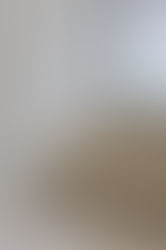![[크기변환][Atelier ITCH] Villa de VOID (9).jpg](https://static.wixstatic.com/media/618010_6bef712928ab41d4aeb485654fc50faf~mv2.jpg/v1/fill/w_810,h_540,al_c,q_85,usm_0.66_1.00_0.01,enc_avif,quality_auto/618010_6bef712928ab41d4aeb485654fc50faf~mv2.jpg)
Villa de VOID
Design
Construction
Photograph
Complete Year
Category
Location
Atelier ITCH
Atelier ITCH
Kiwoong Hong
2024
House / Remodeling
Gwanak-gu, Seoul, Korea
비움으로써 채워지는 집
비움의 집은 지하층과 지상층을 하나로 연결하는 보이드(void)공간을 구심으로 해석한 공간이다. 비움으로써 공간의 주축이 만들어지고 구성원의 움직임이 모여들고, 그리하여 다시 채워지는 공간을 상상했다. 위, 아래로 열린 공간이 되는 이 곳에는 남향의 빛이 들며 주방을 통해 들어오는 빛과 자연의 움직임은 공간을 구성하는 구성원들의 삶을 더욱 풍성하게 한다.
‘Villa de VOID’ is a space envisioned around a central void that connects the basement and the ground floor into a unified whole. Through emptiness, the main axis of the space is formed, attracting the movements of its inhabitants and imagining a place that is eventually filled once again. This vertically open area welcomes southern sunlight, while the light and movements of nature flowing in through the kitchen enrich the lives of those who dwell within.


Villa de VOID는 좁은 골목을 따라 들어와야 건물이 보이는, 주변 건물에 끼어 있는 모양새로 자리하고 있었다. 우리가 마주한 이 공간은 반지하와 1층이 각각의 출입구로 구성되어 분리되어 있는 주택이었다. 지하층은 천장고가 2M가 겨우 넘는 창고 같은 공간으로, 이 공간을 1층과 어떻게 연결하여 효과적으로 사용할지가 중요했다. 그리고 건물에 둘러싸여 있는 이곳에 어떻게 하면 환기적 요소를 실내로 유입시킬지에 대한 고민이 중요했다. 이곳에 거주하게 될 부부는 모두 재택근무를 하며, 이제 막 성인이 된 아들 또한 집에서 보내는 시간이 많았다. 모든 가족이 집에서의 생활시간이 긴 만큼, 기존 집의 단점을 극복하여 가족 구성원이 소통하는 생활을 할 수 있는 개방감 있는 집에 대해 이야기하며 설계를 시작했다.
공간 언어에서 'VOID(보이드)'는 덜어냄의 미학을 보여주는 물리적 방법 중 하나이다. Villa de VOID 프로젝트는 지하층과 지상층을 하나로 연결하는 보이드 공간을 구심으로 해석한 공간이다. 비움으로써 비워진 공간은 전체 공간의 흐름의 주축이 되는 구심점의 공간이 되고, 이곳으로 가족 구성원의 움직임이 모여들고 그리하여 다시 채워지는 공간을 상상했다. 우리가 비워준 공간은 지하층과 지상층을 연결할 수 있는 건물의 남향 부분이었는데, 비록 옆 건물의 배면이 보이지만 3M 정도의 마당과 남향 빛을 확보할 수 있는 공간이었다. 이 부분의 바닥을 지하로 열어 지하층과 통하는 계단을 구획, 마당으로 통하는 창을 크게 열어 남향의 빛을 받아 더욱 개방감 있는 공간이 될 수 있도록 했다.
Villa de VOID was tucked between surrounding buildings, only coming into view after navigating through a narrow alley. The house we encountered was composed of two separate units: a semi-basement and a 1st floor, each with its own entrance. The semi-basement, with a ceiling height barely exceeding 2 meters, felt more like a storage space, and it was essential to find an effective way to connect it with the 1st floor. Given its location tightly enclosed by neighboring buildings, another key concern was how to bring ventilation and natural airflow into the interior. The couple who would live here both worked from home, and their newly adult son also spent much of his time at home. As the entire family spent extended hours indoors, we began the design process by addressing the shortcomings of the existing structure, envisioning a more open and connected home that would foster interaction and communication among family members.
In the language of spatial design, a "VOID" is one of the physical expressions of the aesthetics of subtraction. The ‘Villa de VOID’ project interprets the void space—connecting the basement and the ground floor—as the central core of the home. By carving out space, the void becomes the focal point that organizes the flow of the entire house. It is imagined as a place where the movements of the family naturally converge and, through this convergence, the space is filled once again. The area we chose to empty was the south-facing part of the building, which allowed us to connect the basement and the ground floor. Although it faced the rear of a neighboring building, this area still offered about 3 meters of yard space and access to southern light. By opening the floor in this area, we inserted a staircase that connects to the basement below and installed large windows toward the yard, allowing natural light to flood in and creating a greater sense of openness.


지하층에서 1층으로 올라가는 계단의 절반, 즉 반지하와 외부로 연결되는 창까지의 계단은 공간 전체를 아우르는 계단을 조성했다. 어둡고 좁을 수 있는 지하공간이 마치 외부와 자연스럽게 연결된 1층의 공간처럼 보일 수 있도록 했다. 다시 창에서 1층으로 올라가는 나머지 반 개층의 계단은 금속의 경량함을 살릴 수 있는 가벼운 느낌의 계단으로 계획해 좁은 공간을 답답하지 않도록 했다.
주방 너머로 보이는 창은 원래 테라스로 사용되던 공간이었다. 기존 테라스 공간을 빼곡한 대나무로 조경한 후 그 풍경이 주방의 배경이 될 수 있도록 했다. 건물로 둘러싸여 있는 현재 컨디션에서 옆 건물에서의 시선을 차단해 주는 방법이자, 자연이 내다보이는 창을 조성하는 것이었다. 하루 세끼 온 가족의 식사를 챙기는 주방공간에서의 시간이 답답하지 않고, 심리적 환기가 될 수 있는 공간이길 바랐다. 대나무로 인해 남향의 빛은 강하지 않게 들이면서도 대나무 사이로 새어 들어오는 빛과 대나무의 그림자가 주방 전체 공간의 분위기를 조성한다. 이러한 자연의 빛을 해치지 않도록 주방 상부장은 삭제하되 수납양은 유지할 수 있도록 한 쪽 벽면 전체를 수납장과 냉장고장으로 계획했다.
The first half of the staircase leading from the basement to the ground floor—extending up to the window that connects to the exterior—was designed as a unified element that ties the entire space together. This approach allows the basement, which could otherwise feel dark and confined, to appear naturally connected to the above-ground level, almost as if it were part of the outdoors. The remaining half-flight of stairs, from the window up to the ground floor, was designed as a lightweight metal structure, emphasizing a sense of openness and airiness to prevent the narrow space from feeling cramped.
The window beyond the kitchen originally opened onto a terrace. We transformed this terrace space by densely planting bamboo, turning the view into a natural backdrop for the kitchen. In a setting surrounded by buildings, the bamboo served a dual purpose: it screened the view from neighboring properties and created a window that opened onto nature. As the kitchen is where the family gathers for all three daily meals, we wanted this space to feel open rather than confined—a place of psychological relief. The bamboo softens the direct southern light, allowing gentle rays and shadows to filter through, shaping the atmosphere of the entire kitchen. To preserve this natural light, we eliminated upper cabinets and instead planned the entire wall on one side to serve as storage and house the refrigerator, maintaining functionality without compromising openness.


























































